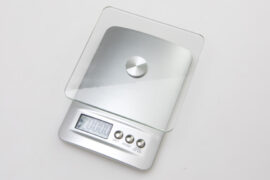Unleash Creativity with the Best No-Cook Play Dough Recipe!
Hey there, super-parents! Are you ready to dive into the world of colorful, squishy fun? Today, you’re in for a treat because we’re going to show you how to whip up some homemade no-cook play dough that’s not only easy to make but also safe for your little ones. Say goodbye to store-bought options and hello to endless creative play at home!
Why Homemade Play Dough?
Making play dough at home is not only a blast, but it’s also incredibly beneficial for your children. It helps them develop fine motor skills, promotes creativity, and can even be a soothing sensory experience. And the best part? Our no-cook play dough recipe is cost-effective and uses ingredients you probably already have in your pantry. Plus, it’s a fun cooking project where even the tiniest hands can get involved!
Ingredients for No-Cook Play Dough
- 2 cups all-purpose flour
- 3/4 cup salt
- 4 teaspoons cream of tartar
- 2 cups lukewarm water
- 2 tablespoons vegetable oil
- Food coloring (as desired)
- Essential oils or extracts for scents (optional)
- Glitter or other fun add-ins (optional)
The No-Cook Play Dough Method
- In a large mixing bowl, whisk together all-purpose flour, salt, and cream of tartar.
- Add in lukewarm water and vegetable oil to the dry mixture.
- Stir the mixture with a spatula until it starts to come together.
- Divide the dough into balls if you’re using multiple colors. Add a few drops of food coloring to each ball.
- Knead the dough on a flour-dusted surface until the color is evenly distributed.
- If you’re introducing scents or glitter, now’s the time to do it. Knead these in until they’re well combined.
- Your play dough is now ready for play time! Store in an airtight container when not in use.
This play dough will not only spark joy in your little ones but provides a fantastic opportunity for you to engage with them in a meaningful and fun way. What’s a better way to bond than creating whimsical shapes and figures together? You can make this activity educational by teaching colors, counting, or even basic geometry when shaping the dough!
Keep Your Play Dough Fresh
To ensure your homemade play dough lasts, it’s important to store it correctly. After playtime, store the dough in an airtight container or a ziplock bag. You can even wrap it in a layer of plastic wrap before placing it in the container for extra protection against drying out. With proper storage, your homemade play dough can remain soft and pliable for several months.
Alright, creative champions, it’s time to roll up your sleeves and get ready for some sensational shaping fun! Not only will your kids thank you, but you’ll feel like a superhero delivering such a homemade delight! Keep reading for more tips and tricks on how to enhance your no-cook play dough adventure.
Next up, we’ll talk about how you can elevate this simple play dough recipe to the next level with natural dyes, engaging textures, and inspiring play ideas that will both educate and entertain. So, let’s keep the good times rolling, shall we? Get set to become the ultimate play dough pro!

5 Essential Tips for Parents Preparing No-Cook Play Dough
1. Gather Your Equipment
Before you start, make sure you have all your tools at the ready. You’ll need a large mixing bowl, measuring cups and spoons, a spatula for mixing, and a flat surface for kneading the dough. Optionally, gather cookie cutters, rolling pins, and other shaping tools to enhance the play experience.
2. Customize with Creative Add-Ins
While our basic recipe is a fantastic starting point, feel free to get imaginative with additions. Food coloring can turn the dough into a rainbow, while glitter, sand, or even small beads can add interesting textures for sensory play. Adding scents like vanilla or lavender can also make the dough a more enriching sensory experience.
3. Engage Kids in the Process
Making play dough is not just play, it’s a learning opportunity. Have your kids help with pouring, mixing, and kneading. It’s a wonderful way to teach measurements, color mixing, and the transformation of materials from soft to firm as they engage in tactile learning.
4. Emphasize Safety and Cleanliness
Even though this is a no-cook recipe and the play dough is non-toxic, it’s not meant to be eaten. Make sure little ones understand this to avoid any snack-time mix-ups. Also, encourage washing hands before and after play to keep both kids and dough clean.
5. Allergy-Check Your Ingredients
Most play dough recipes, including this one, are gluten-based due to the flour content. If you have a child with allergies, consider gluten-free alternatives like rice or oat flour, ensuring that the fun remains inclusive and safe for everyone.
Fun Variations of No-Cook Play Dough
Now that you’ve mastered the basic no-cook play dough recipe, why not take it a step further? Experiment with different natural dyes like beet juice for pink or turmeric for yellow. You can even create themed play dough for holidays or learning themes — think pumpkin spice scent for fall or peppermint for winter holidays!
Incorporating Educational Play with Play Dough
Play dough can be a fantastic teaching tool. Use cookie cutters to teach shapes, ask your children to form letters and numbers, or create a play dough “garden” to teach about plants and nature. It’s a great chance for children to practice their motor skills, learn about spatial relationships, and even follow multi-step instructions.
Clean-Up and Storage
When the fun is done, ensure that the play dough is stored properly to maintain its texture. A thorough clean-up also means wiping down surfaces and ensuring that any residue is removed, keeping your home clean and ready for the next playful adventure.
And there you have it, crafty creators! Armed with this no-fuss, no-cook play dough recipe, you’re all set to offer a splendiferous playtime experience. Remember to be in the moment, relish in the fun, and cherish the memories you make. Happy playing!
See more great Things to Do with Kids in New Zealand here. For more information see here
Disclaimer
The articles available via our website provide general information only and we strongly urge readers to exercise caution and conduct their own thorough research and fact-checking. The information presented should not be taken as absolute truth, and, to the maximum extent permitted by law, we will not be held liable for any inaccuracies or errors in the content. It is essential for individuals to independently verify and validate the information before making any decisions or taking any actions based on the articles.




